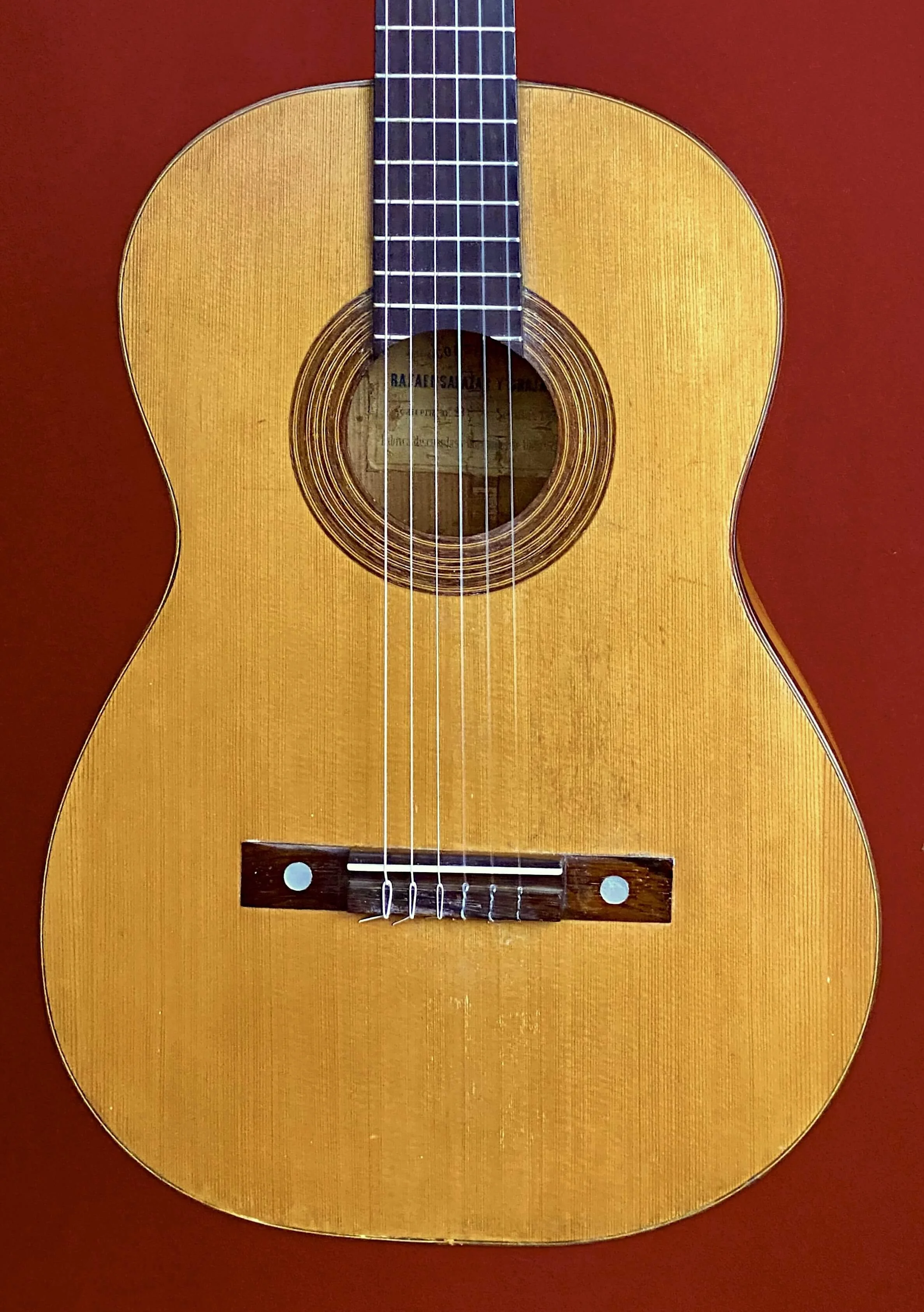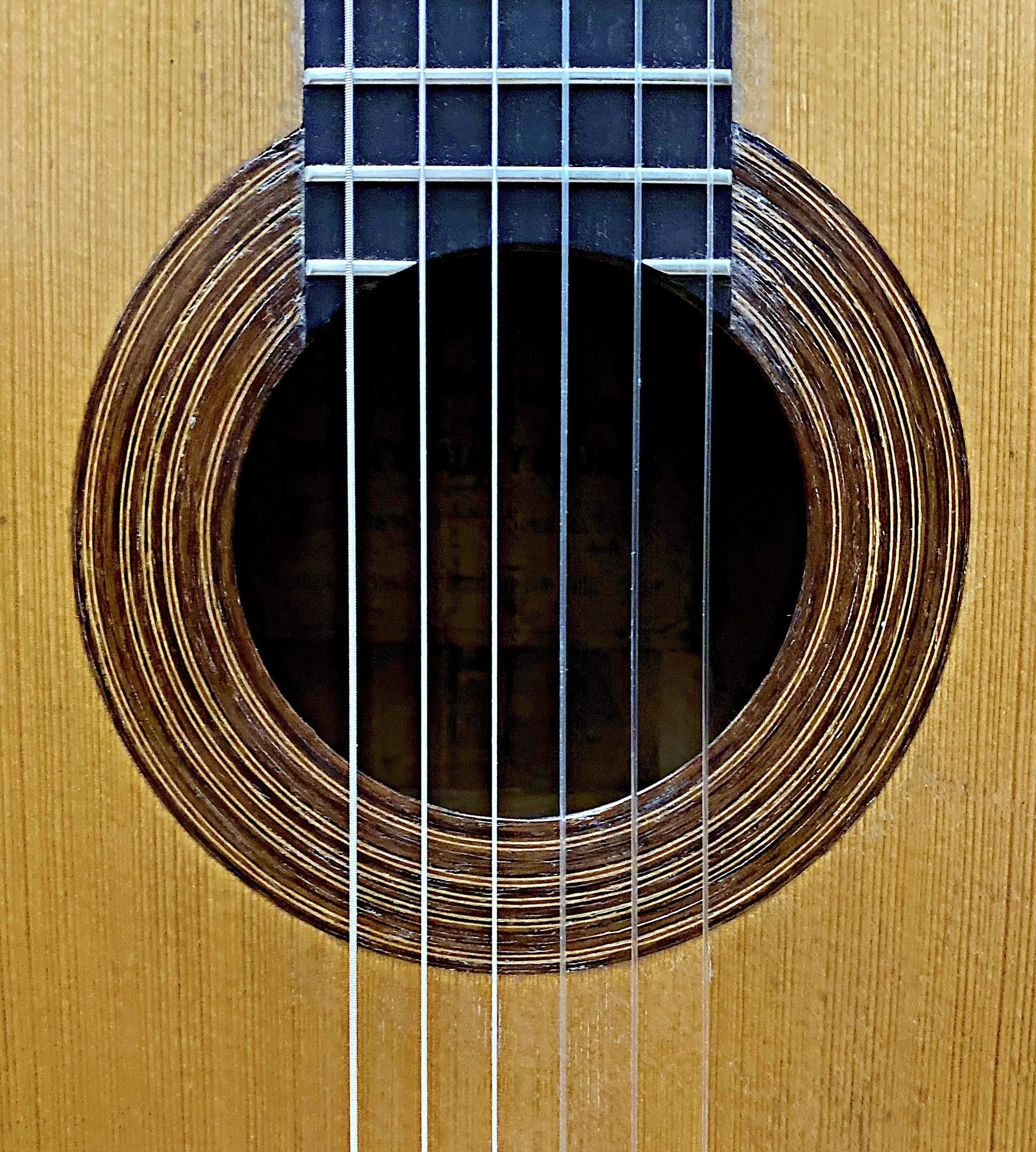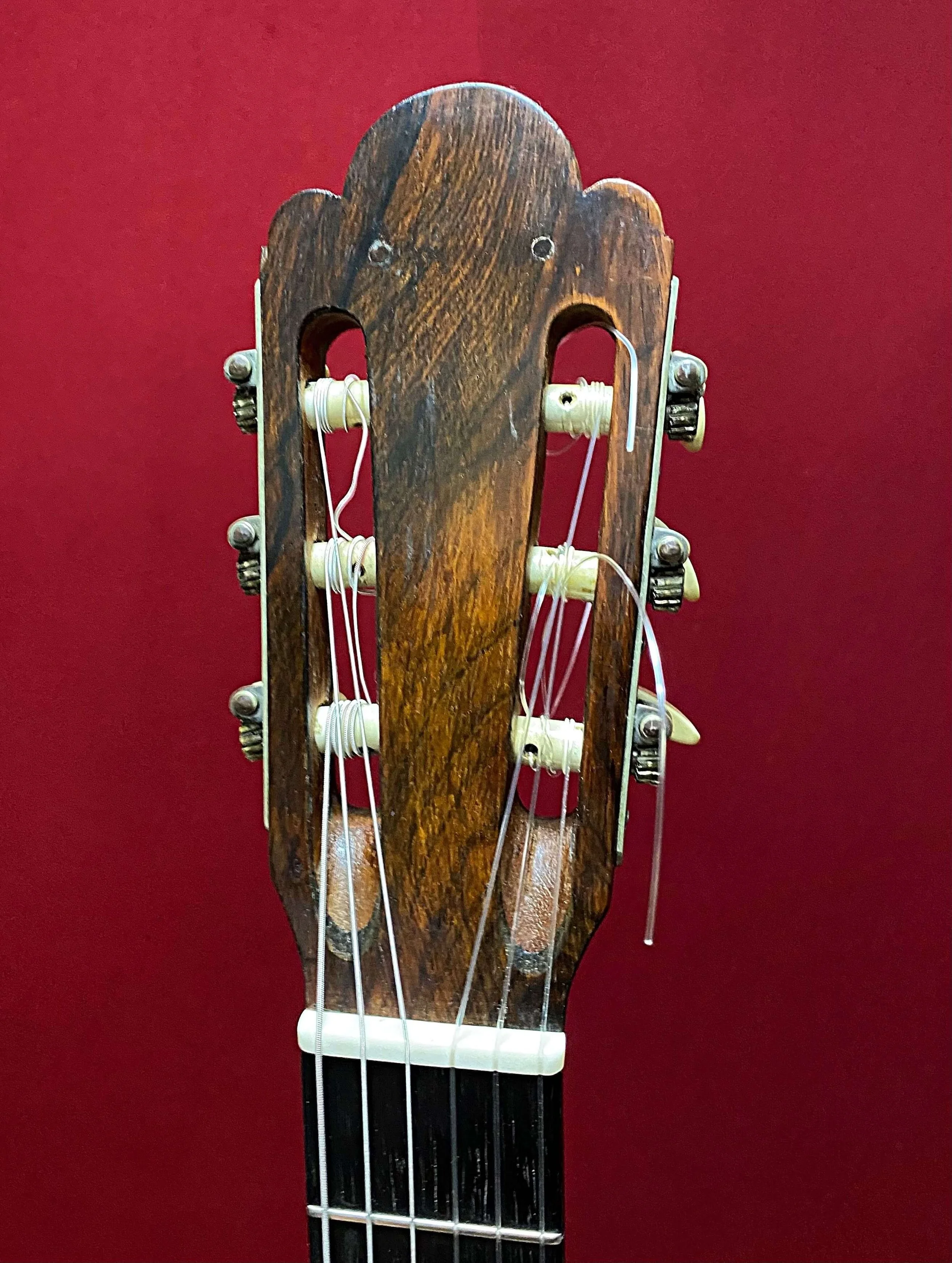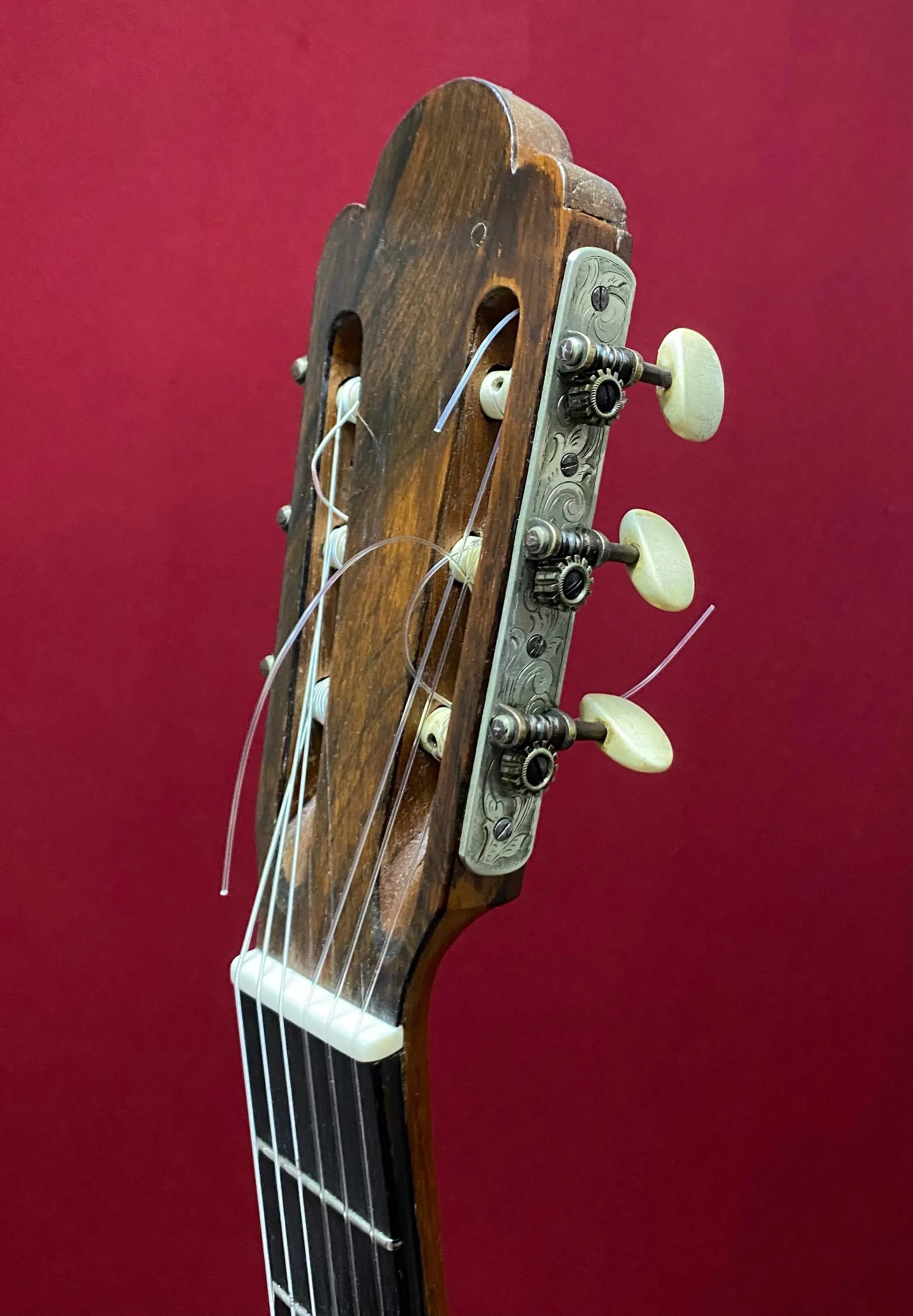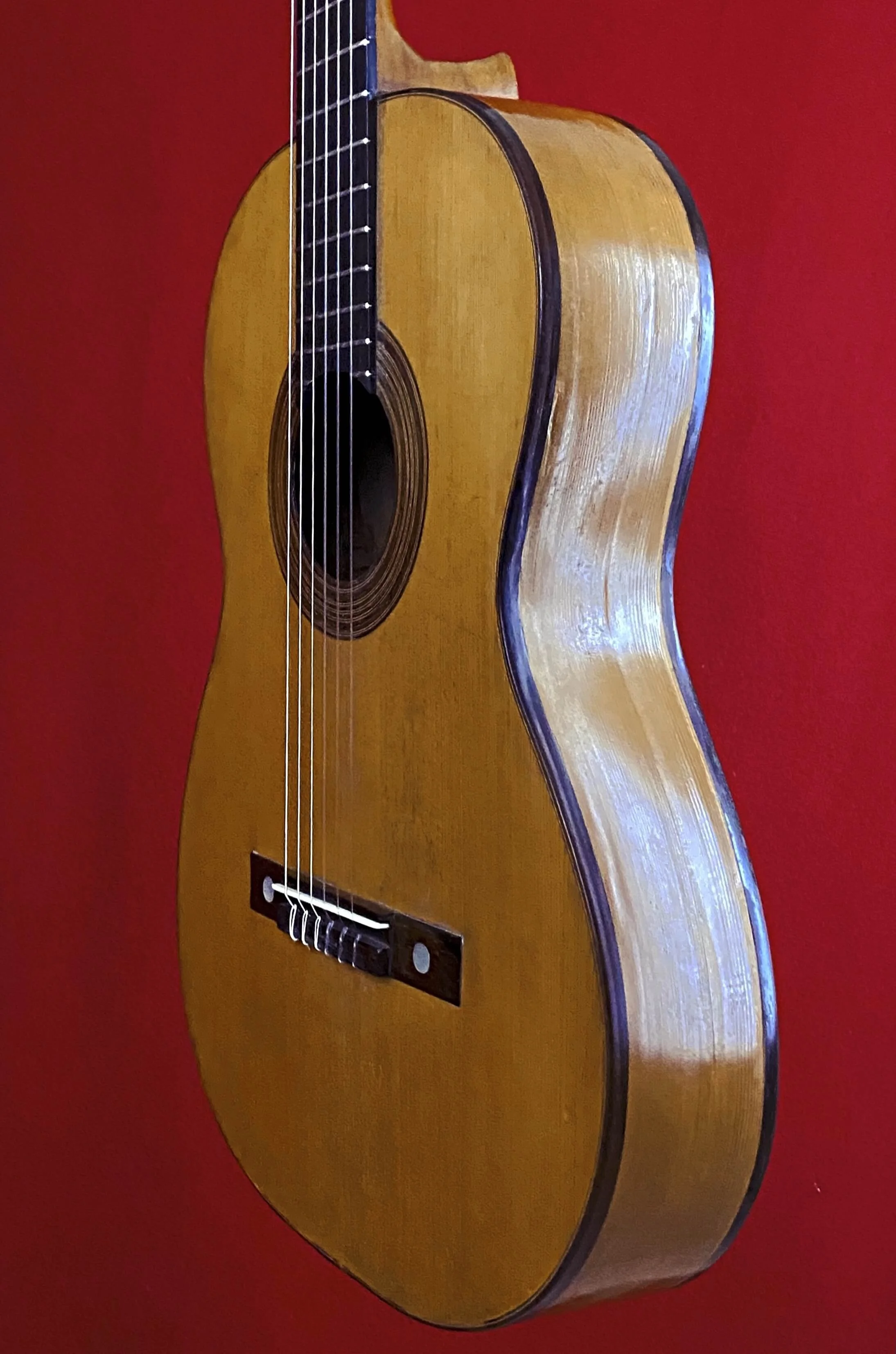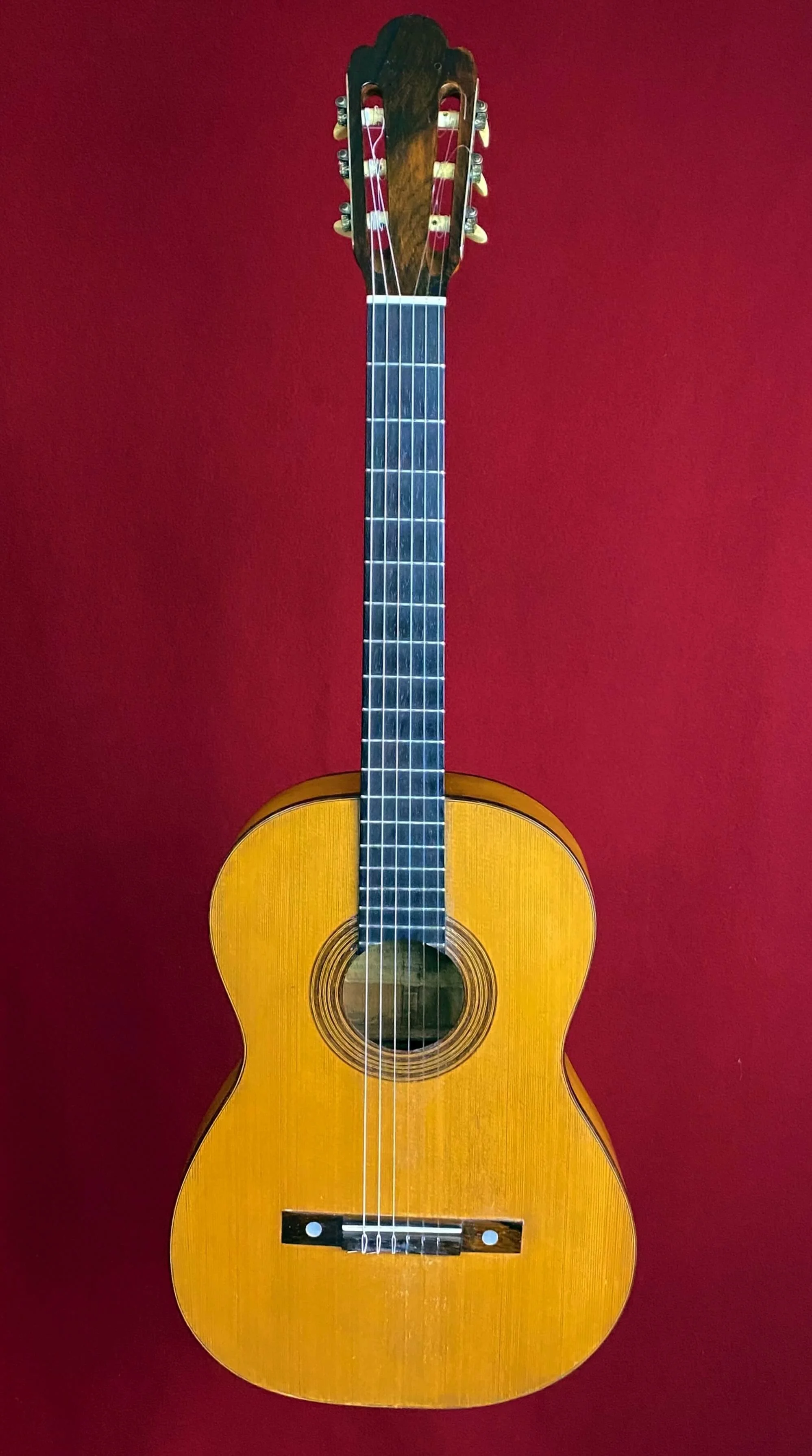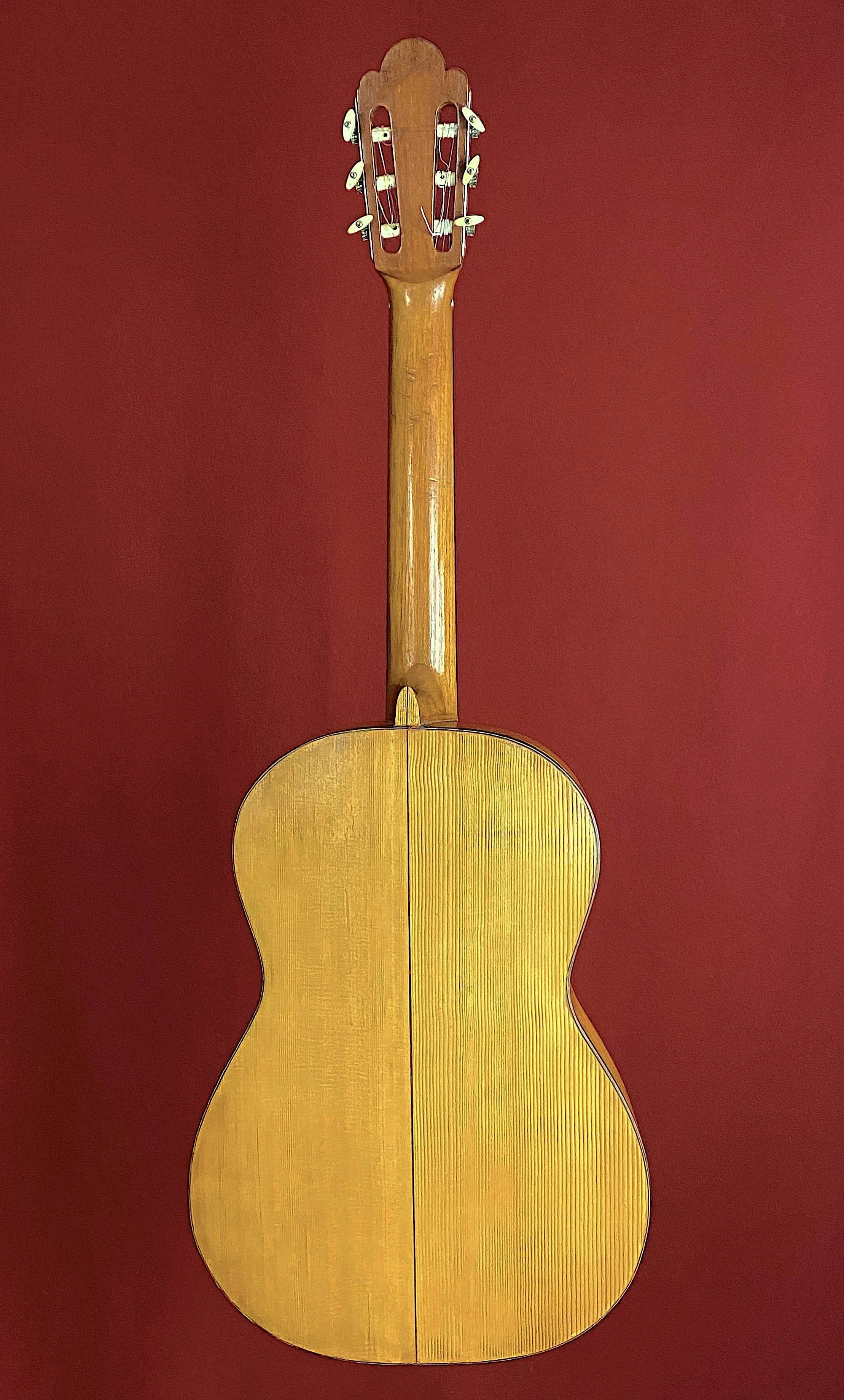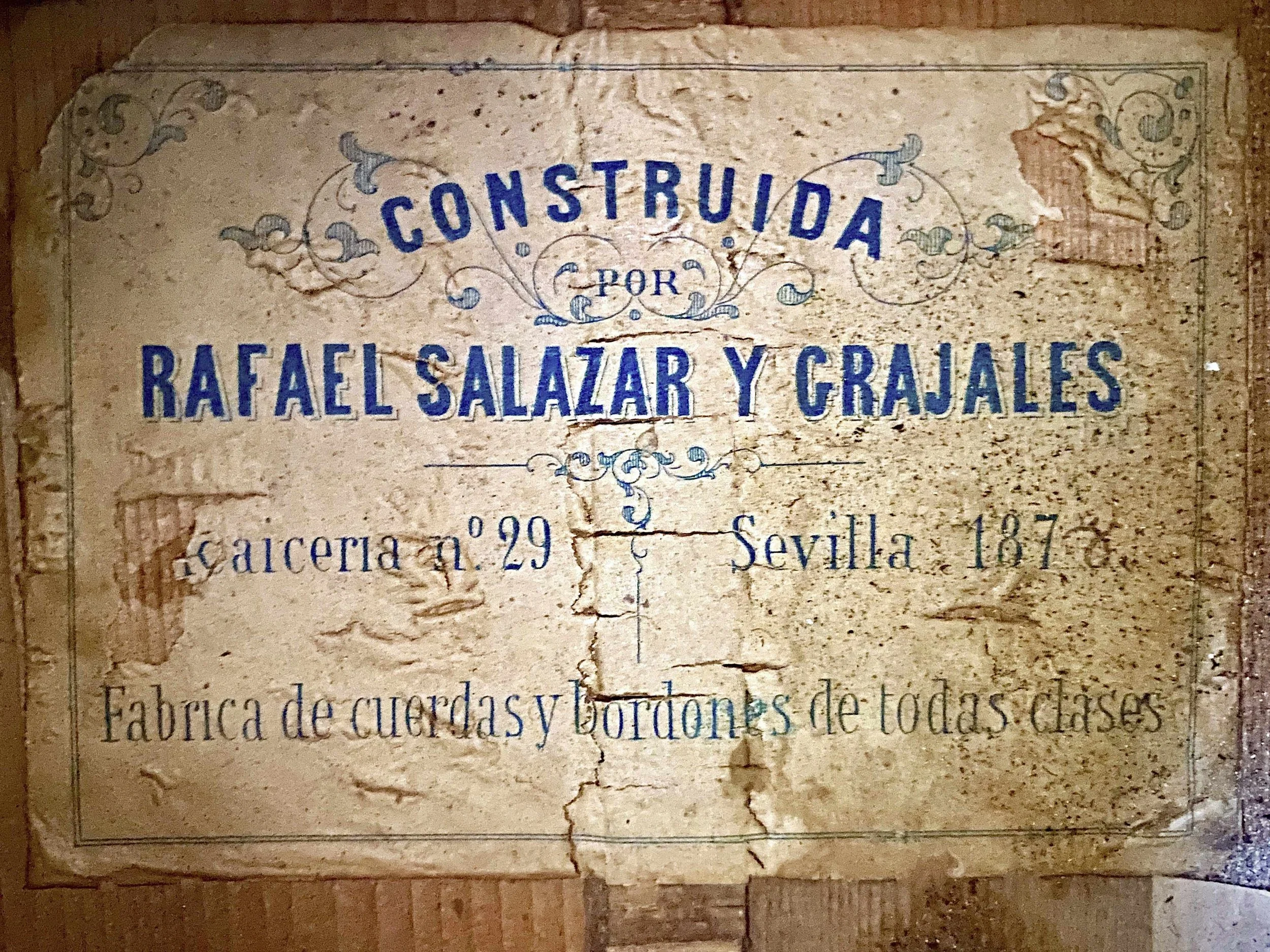1878 Rafael Salazar y Grajales guitar
1878 Rafael Salazar y Grajales guitar
Make: Rafael Salazar y Grajales
Model: Spanish Guitar
Model Year: 1878
Top: German Spruce
Back & Sides: Maritime pine
Scale: 650mm
Nut: 50mm
Finish: French polish
Tuners: 1909, probably German
Made in: Sevilla, Spain
Condition: Restored - Excellent
Location: Tucson
Rafael Salazar y Grajales (1842–1882) was a contemporary of Antonio de Torres during their time in Sevilla. Guitar making was deeply rooted in his family, with his father, Diego Salazar y Soto (1807–after 1868), and his grandfather, Manuel Salazar, both being accomplished luthiers. Rafael was born while the family lived at Calle Carpintería 47, where his father’s workshop was located. Sometime before 1861, the family moved a few blocks away to Cuna 30, near Calle Cerragería, where Torres also had his shop. By 1865, trade guides listed both Rafael and his father as guitar makers operating at Cuna 30. Around this time, Rafael had married María de la Concepción Mara Vides, and they had two children, Antonio and Josefa.
After Diego’s death in 1868, Rafael established his own shop at Alcaicería 29, close to his previous location. There, he continued crafting guitars until his untimely death in 1882 from pulmonary tuberculosis. While guitars by contemporaries such as Manuel de Soto y Solares (1839–1906) and Manuel Gutiérrez (1773–1857) have survived, relatively few instruments from other Sevilla-based luthiers of that era remain. However, another guitar by Rafael Salazar y Grajales is known to exist in the collection of Algun Morgan and Liam Romanillos.
The influence of Torres on Rafael’s work is immediately evident upon examining this guitar. Externally, it closely resembles the simpler guitars Torres produced between 1864 and 1868 in terms of size, shape, and proportions. Internally, it features thin fan bracing akin to Torres’ designs, though it departs from Torres’ use of diagonal kite bracing at the bottom. Instead of the five or seven fan braces commonly seen in Torres’ guitars, this instrument employs nine fan braces, demonstrating Rafael’s willingness to experiment and innovate rather than strictly replicate Torres’ designs.
This guitar delivers a distinctive tonal quality with a rich harmonic character. Its trebles and basses are exceptionally well-balanced, with each note resonating clearly and maintaining strength even in the highest registers. The choice of materials sheds light on Rafael’s approach to crafting an affordable yet high-quality instrument. The soundboard is made from meticulously book-matched spruce (Picea abies), with narrow grain at the center and wider grain towards the edges. In contrast, the back and sides are constructed from mismatched maritime pine (Pinus pinaster), a wood commonly used in Spain for furniture and utility purposes due to its rapid growth and availability.
Originally fitted with tuning pegs, this guitar underwent a significant modification in 1909 when Julián Gómez Ramírez, a celebrated luthier from Madrid who later established a workshop in Paris, replaced the pegs with tuning machines. Gómez Ramírez valued the guitar highly, as evidenced by his repair label inside the instrument. Following this modification, the guitar remained in France, where it was later restored by Francoise and Daniel Senier de Ridder. It was featured in their book, The Spanish Guitar: 1750–1950 (2019: 112–113).
The guitar eventually came into the possession of Marten Falk, a prominent Swedish guitarist. After discovering Falk’s performances with the instrument on YouTube in 2017, I expressed interest in acquiring it if he ever decided to sell. To my great fortune, this opportunity arose, and I now treasure this remarkable guitar. Its unique history, exceptional sound, and connection to Rafael Salazar y Grajales’ legacy make it an invaluable part of my collection.

